As the skincare industry continues to evolve, at-home facial tools have become increasingly popular. With a variety of devices on the market, it can be challenging to decide which skin care tools you need—if any. Additionally, you may be curious how these facial tools hold up against professional devices. In this post, we will help you decipher what is worth your time and energy in your at-home routine, versus what is best left in the hands of a professional. Read on as we explore a range of popular at-home facial tools, and compare them to their professional counterparts.
Microneedling
When it comes to increasing collagen production in your skin, microneedling is the gold standard treatment to seek out. However, there is a substantial gap between the efficacy and safety of at-home microneedling facial tools and professional devices. Let’s dive in!
Microneedling: At-Home Facial Tools
At-home versions of this facial tool are typically a manual roller (a.k.a. dermaroller) or a stamping device with needle sizes that start at 0.25mm in length. Generally speaking, the main benefits of using these at-home microneedling facial tools is increased product penetration and efficacy as the microneedles create shallow channels in the top layers of the skin.
Things to be aware of: Many dermarollers and stamping devices that are on the market are made with metals such as tin that are not healthy or safe to be puncturing the skin. In the case where needles are being rolled over the skin, there is greater risk to cause damage and infection due to pulling and dragging. Furthermore, as these devices are being used repeatedly, over time the needles can become dull and blunt causing micro-injuries that show up as scars and hyperpigmentation. Ensuring the device is disinfected after every use to avoid spreading bacteria is another important consideration.
Microneedling: Professional Devices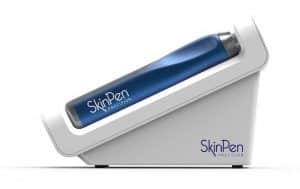
Professional microneedling devices are more precise and powerful, and can be used to address more significant skin concerns. The needle penetration depths range from 0.25mm up to 2.5mm allowing for treatment customization. This professional facial tool usually takes the form of a pen with a tip that houses surgical steel needles that are penetrated as the pen glides over the skin. Millions of microchannels that are created by the motorized device initiating a controlled wound healing process that repairs damaged skin, and produces new and healthy connective tissue.
Professional devices such as the SkinPen® have been cleared by Health Canada and the FDA to treat scars and wrinkles. Because the service is being provided by a trained professional who can adjust the needle lengths according to your skin’s needs, the treatment is both highly safe and effective.
The Verdict
If you are looking to increase collagen production, reduce pore size, minimize wrinkles, and repair scars, working with a professional microneedling device is your best bet.
Microcurrent
Microcurrent technology uses a low-level electrical current to stimulate facial muscles and tighten the skin. This modality has been around for decades, but has only recently become mainstream thanks to celebrity endorsements and the availability of high quality at-home facial tools.
Microcurrent: At-Home Facial Tools
At-home microcurrent devices are often sought out as facial lifting tools. They are typically handheld and smaller compared to professional microcurrent technology. There are a variety of ways in which at-home microcurrent facial tools will differ from a professional devices, including the intensity of the current, the sequencing by which the microcurrent is delivered, as well as the precision by which the device can target specific muscle groups. At-home microcurrent facial tools such as NuFace can be used for daily or weekly use. Having this tool at your disposal is fantastic to achieve a quick and easy lift before a big event, or when the stress of life is showing up in your skin. Regular use will yields the most benefits for the skin and muscle tissue, so to get the most out of this investement, you will want to commit to using it a minimum of once a week.
Microcurrent: Professional Devices
Professional microcurrent devices are often equipped to deliver a higher frequency of microcurrent, as well as specific sequencing of the microcurrent for greater muscle stimulation. These professional facial tools are shaped in a way that allows for greater precision when targeting specific muscle groups in order to re-educate them to stay in a more lifted position, or to remain relaxed—think lifting the jawline and brow, and relaxing stubborn frown lines. This allows for a more significant impact on the skin for sculpting and lifting the features, hydrating the tissues and stimulating the production of collagen and elastin.
The Verdict
At-home microcurrent facial tools are a safe and effective way to the health of the skin and muscle tissue as well as provide an instant subtle lift of the features. Having this tool in your skincare regimen is a great investment, especially if you’re wishing to avoid or delay injectables. Consider a professional microcurrent treatment like ‘bringing out the big guns’. You will see more dramatic results, faster. In this case, both the at-home microcurrent facial tools and the professional devices compliment each other.
LED
LED (light emitting diode) facial tools use light technology to improve the appearance of skin concerns such as acne, hyperpigmentation, and fine lines. If you think of your skin cells like battery cells, the LED is recharging those batteries to function optimally. The results are clear, bright, plump and glowy skin.
LED: At-Home Facial Tools
At-home LED devices typically use either a single wavelength of light, or a blend of red, blue, and infrared wavelengths. Typically the at-home LED facial tools come in a mask form that is placed over the skin for 10 minute intervals. There are also hand-held options that can be moved or left stationary on the skin while emitting the light.
LED: Professional Devices
Professional LED devices often have more diodes and a higher power density, leading to more dramatic results than at-home devices. Professional LED treatments are also usually combined with other professional skincare treatments, such as chemical peels, to maximize their impact on the skin.
The Verdict
The frequency of LED sessions is an important factor in reaping the full benefits of these facial tools. Therefore, having an at-home LED device is a great purchase to make if you are prepared to use it 1-3 times per week. If you’re not ready to make the investment or commitment in your skincare routine, consider including LED with your professional skin treatment. We especially love this tool for brides-to-be, or for any big occasion that you want a ‘lit-from-within’ glow. Ultimately, these at-home facial tools compliment the professional devices. It’s a win-win in our opinion.
Dermaplaning
Dermaplaning involves the use of a blade to shave away the top layer of dead skin. This treatment is quite popular amongst people who are bother by the vellous hairs (peach fuzz) on their face, as the process shaves away these hairs in addition to resurfacing the skin.
Dermaplaning: At-Home Facial Tools
At-home dermaplaning facial tools are readily available and relatively affordable; however, the possibility of over-doing this treatment is quite high. The main issues that can arise when attempting to do this at-home are causing knicks and scratches which can lead to scars and hyperpigmentation. Additionally when the skin barrier is over-exfoliated issues with acne, sensitivity and chronic dehydration can arise.
Dermaplaning: Professional Devices
In the steady hands of a professional, a dermaplaning treatment generally provides a deeper exfoliation than what can be achieved at home. However, the risks of scraping or knicking the skin and compromising the skin barrier are somewhat reduced, but still present with a professional treatment.
The Verdict
With all the various curves and densities of skin on the face, it can be very difficult to precisely treat your own skin with at-home dermaplaning facial tools possibly leading to the aforementioned skin problems. As you can probably tell, we are not really fans of this treatment method, whether at-home or in-clinic. However, if you choose to undergo this treatment we recommend sticking with a professional.
Gua Sha 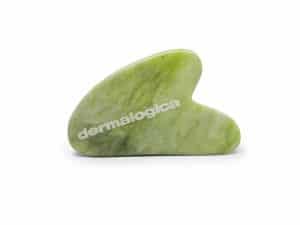
Gua sha has had a very big moment in skincare in recent years. These facial sculpting tools are flat, curved and smooth stone implements that are worked over the face to reduce muscle tension, unwind connective tissue adhesions, and relieve puffiness.
Gua Sha: At-Home Facial Tools
At-home gua sha facial tools are generally the same as what is used in a professional treatment. The difference being that you are administering the treatment yourself. There is a risk of bruising and causing burst blood vessels if there is tool much friction or pressure used on the skin with these tools, so having a gentle approach is important.
Gua Sha: Professional Devices
As mentioned above, the gua sha tool that is used in a professional treatment is the same version you would be using at-home. As a trained professional, your skin therapist understands the risks involved as well as the methods required to achieve sculpted and relaxed features. In the professional setting this is an excellent service for anyone desiring to enhance their relaxation, diminish expression lines, reduce puffiness and lift their features —simply choose it as an add-on when you book a skin treatment with us!
The Verdict
The at-home version of this tool and the professional treatment compliment each other. Gua sha facial tools are an inexpensive and effective ritual to add into your home-care routine, just be cautious about the pressure and intensity with which you are applying the gua sha tool to your skin. In conjunction with a professional skin treatment, gua sha enhances relaxation and skin rejuvenation.
Facial Cupping
Facial cupping involves the use of either silicone cups or glass suction cups that work as fascial release tools. They are gently glided over the skin to wring out tension from the muscle and connective tissue while encouraging lymphatic drainage.
Facial Cupping: At-Home Facial Tools
Similar to gua sha, there is not generally any difference between at-home facial cupping tools and their professional counterpart. Doing this treatment at-home poses the risk of dilating vessels and bruising should too much suction be used, and/or if the cup is left stationary on the skin.
Facial Cupping: Professional Devices
The use of facial cupping tools in a professional treatment can enhance muscle relaxation and help break-up adhesion in the connective tissue. It also helps to drain stagnant lymph that contributes to puffiness. There is less risk of bruising or dilated vessels when this treatment is performed by a professional.
The Verdict
Facial cupping can be done safely at-home if the correct technique is applied. If you are at all worried about causing dilated vessels or bruising, we advise leaving at-home facial cupping tools out of your beauty routine and instead, enjoying the benefits under the care of a professional. Good new! This modality is included with full face cosmetic acupuncture treatments.
Conclusion
In some instances at-home facial tools can be a great addition to a skincare routine, but they should be used carefully and with realistic expectations. While they can provide some benefits, such as daily maintenance and subtle skin improvements, professional devices often offer more potent and dramatic results. When deciding between at-home and professional devices, it is important to consider the cost, the convenience, your commitment, and the desired results. Ultimately, the best choice will depend on your individual skincare needs. We hope you found this guide helpful in discovering facial tools that actually work to achieve your goals. If there are facial care tools we didn’t cover such as a trending face icing tool or facial cleanser tools you are curious about, please ask us in the comments section—we’re happy to expand on the topic!

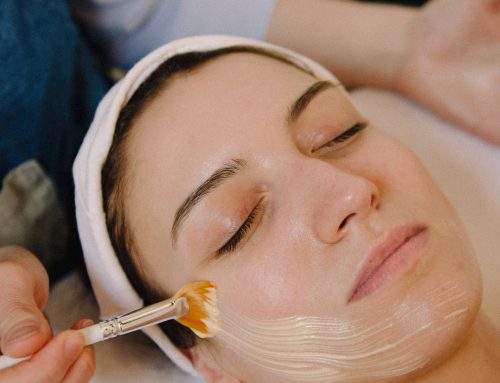
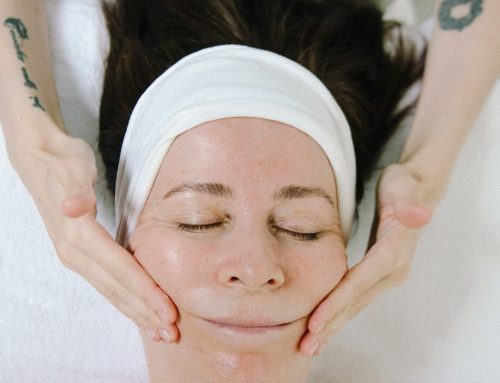
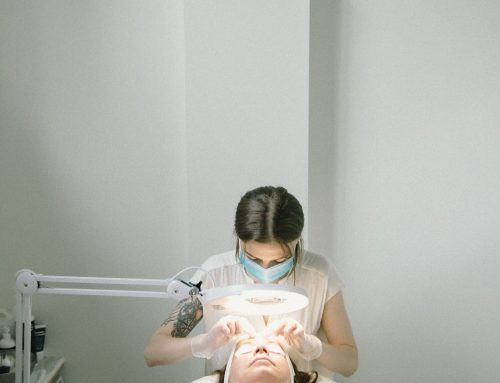


Leave A Comment